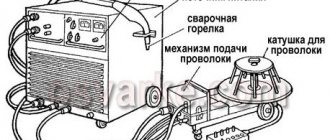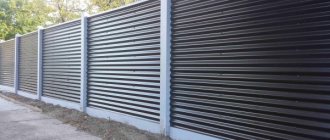Recently, more and more often you can find houses or cottages equipped with power plants. The main advantage of an autonomous generator is that it is possible to provide electricity to an object located at a distance from a populated area. For privacy with nature, many people move to remote areas where there is no electricity or running water. If water can be provided to a family using a borehole or a well, then gasoline or diesel generators are used as a power plant.
Photo: Casing for the generator. Author: Artemy Ivanov
A power plant, like any other internal combustion engine, produces a sound during operation, which not only interferes with constant operation, but can also lead to negative consequences. Unfortunately, an engine that will not make noise during operation has not yet been invented, so options for soundproofing the generator should be considered.
How to make noise insulation for a generator with your own hands?
There are cases when a power outage is extremely undesirable, so an alternative source of electricity is needed. This source is a generator running on gasoline. What do we pay attention to when purchasing such a unit? How much fuel does it consume and what is its power. It is important how long the generator can supply the home with electricity while remaining uncritical in terms of costs. If you need a generator for a long time, look at diesel generators; if for a short period of time, look at gasoline generators. The main thing is to understand how long there may be no electricity, what the power of the electrical appliances used is, how much fuel you need to store at home in order to comfortably survive such periods.
Considering that many people buy boilers, electric kitchen stoves and use home appliances on electricity to be on the safe side, the generator will need to service a large number of appliances.
To select a generator, you need to make all these calculations, make a choice, do not forget to take into account the parameters of the device itself and think about the place for its storage and control features if necessary. There is a lot to consider, but something that is often overlooked is the volume of the generator. They buy it to maintain their usual comfort, but as soon as you turn on the generator, you forget about the comfort of home and planned activities. And even the neighbors and all the residents of the street forget about the comfort and tranquility of home.
From all this we can conclude: all the advantages of the generator will come to naught if the issue of noise absorption is not resolved. There are, of course, quieter generators (inverter), but that’s a different topic. Let's consider options for inexpensive noise insulation solutions for a generator.
Types of electric generators
Gasoline generators are the most common household sources of electricity. Their features are as follows:
- large selection of prices;
- low power - 0.8-12 kW;
- compact mobile and stationary models;
- There is a 3-phase and single-phase generator;
- Four-stroke internal combustion engines are mainly used.
When choosing the option of how to connect the generator to the home network, the cooling scheme of the internal combustion engine depends on whether the unit is used permanently or temporarily. Typically, devices are equipped with air radiators. Industrial models are capable of operating around the clock using liquid cooling. They are produced mainly three-phase. They are larger in size, but more economical.
Connecting a diesel generator to the network in the house is used less frequently due to the high price. But still, its use is advisable due to its large resource.
Container for generator
Attempts to take the generator to another room, to a barn, have no effect. To muffle the noise, a special container or noise-proof casing is needed. You can make it yourself. By hiding the generator in such a box, it can even be placed on a balcony if the sound insulation is sufficient.
What should be in such a box? It is a “chest” lined with noise-absorbing materials, which provides ventilation and an exhaust pipe.
In such a casing, the generator will be able to operate in cold weather, which is an additional advantage. The box for the generator can also be created for insulation, which would allow the generator to be installed at a great distance from the house outdoors.
A homemade “house” for a generator may not look as elegant as a purchased one, it all depends on the creativity of the master, and yet the very fact that this can be done independently at minimal cost gives us the opportunity to choose whether to do it ourselves or buy a ready-made one.
Alternative: ready-made solutions
The fifth way is to purchase a ready-made casing or a generator in a casing. Why is this solution better? If a container is provided for a specific generator, it absorbs exactly as much noise as the generator produces, taking into account the power and design of the generator.
You can also purchase a universal housing, the main thing is that your generator fits there. This option is appropriate if you plan to place the generator in a visible place near the main buildings. The body is usually metal and fits perfectly into any design.
Housings are also made to order. When choosing a generator, it is important to remember that a diesel generator is usually noisier and it is better to order a ready-made casing for it.
DIY generator box made from cork panels
There are several options for making a generator silent. Let's look at some. The easiest way is to make a box from cork panels.
The dimensions are determined as follows: we measure the generator and add 5–10 cm to the dimensions, depending on the type of insulation. If it is glass wool - 5 cm, if polystyrene - 10.
The box must be equipped with a door to provide access to control and maintenance.
You will need materials - panels for building the box, insulation, cement particle boards (CPB).
The panels are used to make a body without a lid, providing hinges on one of the sides. Sheets are prepared from DSP, 3 cm longer than the sides of the body, insulation is glued to them and allowed to dry for a day. The insulation is attached to the body with self-tapping screws, making sure that there are no protruding edges.
Openings are made in the walls for ventilation and equipped with grilles. Holes for the exhaust pipe are also cut. The lid is attached to hinges and installed in the place provided for it.
Source
Ventilation device
Good ventilation must be ensured in the generator room. To do this, in the simplest case, you can extend a galvanized iron pipe 0 10 cm outside the roof. But houses built for air-cooled electrical installations require forced ventilation. The fans are installed in the air duct or built into the wall. Their functions are different: some blow on the running engine of the power plant, others remove hot air from the room.
So, for a portable installation with a power of 6 kW, it is advisable to install two fans with a capacity of 1,000 m 3 /h each. They turn on only when the generator starts and turn off automatically when the engine stops.
It is also necessary to make “bottom” ventilation - a leaky connection between the walls and the floor.
Generator noise insulation
Recently, more and more often you can find houses or cottages equipped with power plants. The main advantage of an autonomous generator is that it is possible to provide electricity to an object located at a distance from a populated area. For privacy with nature, many people move to remote areas where there is no electricity or running water. If water can be provided to a family using a borehole or a well, then gasoline or diesel generators are used as a power plant.
Power plant noise level
As you know, sounds are transmitted in two ways: through air and vibration. When airborne noise enters the house, a person hears a roar from the engine and exhaust system. As for vibrational sound, it can be transmitted through solid bodies, creating discomfort in the room.
Photo: Sound-absorbing box for the generator. Author: Artemy Ivanov
According to experts, the noise level from a power plant is 100 dB; to make it easier to understand, you should consider which sounds are equal to what.
Loud sounds in the room can not only lower your mood, but also prevent you from resting, and as a result, this problem can lead to diseases of the nervous system. Today, with the help of soundproofing and noise-absorbing materials, you can create ideally comfortable conditions.
Ventilation kit WOKS 250
| FAN MODEL | WOKS 250 |
| Air flow [m3/h] | 1600 |
| Static air pressure [Pa] | 160 |
| Static pressure (mm, H2O) | 16,31 |
| Acoustic pressure [dB/A [1m]] | 67 |
| Voltage/frequency [V/Hz] | 230/50 |
| Engine speed [obr./min.] | 2480 |
| Power [W] | 90 |
| Capacitor capacity [hF/VDB] | 3/450 |
| Power consumption (A) | 0,45 |
| Maximum operating temperature [C] | 70 |
| Weight [kg] | 3,93 |
| Motor protection degree [IP] | 44 |
| Insulation class | | |
| Price | 9500 rub. |
Ventilation prevents the generator engine from overheating.
What affects the noise level of a generator?
Essentially, the sound from the generator occurs due to the friction of parts and exhaust from the exhaust system. It is also worth knowing that the volume of noise depends on the type of engine installed on the generator. Today there are three types of generators that are used by humans:
The power plant that produces the lowest noise level runs on gasoline. Gas equipment is considered the second in terms of noise level. There are also combined units that run on gas and gasoline. Depending on the capabilities, the optimal equipment is selected. If the design has an original casing, then the sound during operation of the device will be relatively low.
Diesel generators are much louder; combustion in the engine occurs due to high pressure, resulting in a loud bang. In addition to airborne noise, electrical installations produce a high level of vibration, and to optimize comfort conditions it is worth using sound insulation.
Model types
Installations that generate electric current are divided into types.
- Asynchronous. The design is simple and reliable. Important components are protected from moisture and dust. It is preferable to use devices for active loads. It is not recommended to use asynchronous generators to power electric motors.
- Synchronous. The units do not have the disadvantages characteristic of asynchronous ones. In addition, they maintain a more precise voltage. You need to choose a brushless design, which has much better current characteristics and less radio interference.
- Inverter models are more expensive and have less power. The characteristics of single-phase devices are worse, especially for cheap models. A 3-phase generator is slightly better. Other disadvantages are high cost and less reliability.
Global methods of sound insulation
To suppress the noise level of a running generator at an enterprise, it is necessary to use a separate room. The thing is that the generator power produces high noise, which interferes with operation. An existing structure can be used as a room for the generator or a new structure can be erected. The main requirement of the constructed structure is effective sound insulation. Sip panels, mineral wool or basalt slabs can be used as insulating material. Today the market offers a large selection of soundproofing materials, among which you can choose exactly what you need.
Photo: The generator can be placed outside, isolating it in a special box. Author: Artemy Ivanov
If an existing structure is used, then high-quality noise insulation of the generator must be installed in it. Interior wall decoration is made using sound-proofing and sound-absorbing materials. To decorate the walls of a room you can use: fibrous, porous materials and sip panels. A generator installed indoors will create much less sound.
Methods of noise protection
The proposed option may not eliminate noise 100%, it all depends on the power of the device. There are other ways to protect against noise. The most effective are complex solutions.
It is best to place the generator in a separate room, the sound insulation of which is thought out as much as possible.
Sip panels are used as sound insulation; they consist of two layers, inside of which there is a layer of heat-insulating material. Glass wool or basalt slabs are also used to absorb noise.
The second way to place a generator is to install it on the street away from a residential area. To do this, it must be placed in a box, for example, the one the manufacture of which is described above. A platform and convenient access to its control are specially prepared for the generator on the street.
The third way to reduce noise is to eliminate vibration of the device. Soundproofing solutions can be applied to every element that creates vibration.
The fourth way is to place the generator in the ground. Just like for the box, you need to take into account sound insulation (ground alone is not enough), ventilation and exhaust pipe.
Video overview of the solution:
Spot sound insulation method
As a rule, the generator has several points of contact with the surface. It is through these areas that vibration occurs, which can be transmitted even through hard surfaces: metal, concrete and other surfaces. As an alternative solution, each element that produces vibration can be silenced using soundproofing devices. Currently, some manufacturers offer ready-made soundproofing structures. By placing the device inside the structure, an additional noise insulation barrier is created, as a result of which noise and vibration are significantly reduced. It is important to carefully study the design characteristics so that difficulties do not arise during operation.
Advantages of standard housings
The autonomous power plant installed in the building has a relatively low noise level, which allows the equipment to be used not only outside, but also inside the facility. The metal casing also gives the equipment a more cost-effective appearance. In addition, a protective noise-absorbing casing for the gas generator helps protect the operating mechanism from damage and clogging. Currently, the market offers a large selection of enclosures that can effectively reduce noise levels.
In the manufacture of standard enclosures, the characteristics and features of the equipment are used, which makes it possible to most effectively reduce the sound level from the generator. Depending on the model of the unit, the optimal protective layer of sound insulation is selected. To ensure that the casing remains effective and reliable for a long time, the surface of the casing is painted with a special anti-corrosion paint. The appropriate casing is selected based on the type, model and dimensions of the generator design.
It is worth noting that standard products are initially designed for a certain level of noise, which they effectively absorb. Also, the unit fits perfectly into the frame and is fixed. When purchasing a standard casing, you don’t have to worry about its effectiveness, because all the device’s parameters of interest are indicated in the instructions, as well as the characteristics. Such products must have a quality certificate, which will help you buy an original product from the manufacturer.
Generator house design
Uninterrupted operation of the generator room will be possible only when you can constantly maintain the temperature inside not lower than +5°C. It is considered optimal for high-quality and uninterrupted operation of the unit. That’s why it’s so important to insulate the building.
For the frame of the generator room, we recommend that you use a steel angle. It can be attached to the anchors that we mentioned earlier and which you should have secured while laying the foundation.
A profiled metal sheet is welded to the internal and external posts with a distance of 10 cm between each. Afterwards, fill the resulting free space with high-quality heat-insulating material. Mineral wool, which is comparable in thermal characteristics to brickwork, is a good choice.
You will also need angle steel for the roof frame. It is necessary to lay metal sheets on its shelves, and put insulation on top of them. The roof itself should be made of metal tiles.
Door and platform to the generator
The width of the door to the generator room should be between 60 and 70 cm wide. Make the area between the doors and the generator itself 1x2 m in size. Between its other sides the distance can be smaller - from 50 to 60 cm.
Inside, be sure to finish the walls with special paint that will prevent the metal sheets from rusting. This way you will not only achieve a pleasant interior design, but will significantly extend the life of the house itself.
Any generator room must have a good ventilation system. The easiest way to do this is to take a pipe out of the house (we recommend a 10 cm galvanized iron pipe). If your power plant is air-cooled, you will need a forced ventilation system. Such a fan will need to be mounted either into the wall or directly into the air duct. In this case, the fan can perform quite different functions:
If the power of your installation is below 6 kW, you will need to install at least 2 fans (each with a capacity of 1000 m3/h). They should turn on and off automatically during the start and end of operation of the generator engine.
Do-it-yourself noise-insulating casing for a generator
Purchasing a standard casing for a generator is not an easy and expensive task. Do-it-yourself noise insulation of a gasoline generator will help you make a design with the appropriate parameters and save on purchases. Using soundproofing materials, you can make a casing yourself, spending a little time and saving your own money. There are two options for making a casing that you can make yourself. The first option involves the use of expensive materials such as cork panels. As for the second manufacturing method, it differs in composition and materials used in the design.
Option one (quality)
The process of making a casing with your own hands is simple and includes several stages:
When all structural elements are fixed and dried, a generator can be placed in the product. Thanks to this casing design, the noise level of the generator is significantly reduced, which in turn contributes to the comfort of people living nearby.
Option two (cheap)
As for the second casing design option, the main distinguishing feature is the material used. If in the first case you need to use a cork board, then here sheets of plasterboard are used. The sequence of work processes is the same, but the overall price of the design is much cheaper.
Photo: Do-it-yourself noise-absorbing box for a generator (cheaper option). Author: Artemy Ivanov
Important! To make a noise-absorbing generator casing with your own hands, you should measure all dimensions and parameters with maximum accuracy. Only a responsible approach to the manufacture of the casing will help make it neat and effective in protecting against unpleasant sounds.
Some pro tips
When a decision is made to purchase an autonomous power plant, it is necessary to initially determine its parameters. Depending on the choice of fuel, the noise level may vary (petrol is quieter than diesel). A soundproof enclosure for a generator can effectively protect against extraneous loud sounds from the unit. Also, when selecting the appropriate equipment, you should also take care of choosing a casing. If the protection parameters you are interested in are not found, you can make them yourself. The expected noise level also depends on how correctly and efficiently the casing is made.
Source
Ventilation kit WOKS 200
| FAN MODEL | WOKS 200 |
| Air flow [m3/h] | 850 |
| Static air pressure [Pa] | 130 |
| Static pressure (mm, H2O) | 13,26 |
| Acoustic pressure [dB/A [1m]] | 63 |
| Voltage/frequency [V/Hz] | 230/50 |
| Engine speed [obr./min.] | 2300 |
| Power [W] | 55 |
| Capacitor capacity [hF/VDB] | 2/450 |
| Power consumption (A) | 0,26 |
| Maximum operating temperature [C] | 70 |
| Weight [kg] | 2,92 |
| Motor protection degree [IP] | 44 |
| Insulation class | | |
| Price | 8000 rub. |
The price of the casing increases only for the ventilation kit.
Source of the article: https://lux-stahl.ru/stanki-i-instrumenty/yashchik-dlya-generatora-svoimi-rukami.html
Mini container for generator: step by step with photo
How to make a storage box for an electrical station with your own hands? First, make a list of your requirements and estimate the operating mode of the generator. The type of construction depends on this. An example of a FORUMHOUSE user with the nickname Kostasino will be useful to you.
I made a container for power backup at home. First I bought a 6.5 kW generator, an ATS unit for autostart and made a list of requirements:
The user divided the assembly of the “garage” into stages:
The container lid has a slope. This way the water will roll down in one direction rather than stagnate at the top. To reduce vibration from the engine, a rubber mat was placed on the bottom. I also attached limiter chains to the lid, otherwise when you tilt the lid to a larger angle, you can break the hinges.
Why do power plants burn out and break down: safety precautions when operating a generator
Important! A generator in a box is a high-risk system! See what can result from improper use and choice of container design.
Kostasino
Pay special attention to the ventilation of the generator installed in a container! The example above is that the fuel boiled and the station caught fire. Install thermal protection in the ignition gap and provide for an emergency stop of the generator when the permissible temperature increases. The design of the box must be such that in case of force majeure situations - failure of the emergency system, fire and explosion, the lid is thrown back and the energy of the explosion goes “out into the street”. If you make a steel container, and not from composites, with a rigidly fixed lid, then the explosion pressure will increase severalfold. Steel fragments can injure or kill those passing by or the owner who will put out the fire.
Installing a container for the generator and working on bugs
The user brought the container and generator on a car trailer.
Externally, homemade, no different from the factory model.
Now we’ll tell you how the master solved the problem with insufficient ventilation of the box.
I made the container in winter. I didn't calculate the air exchange. I ran the station at maximum load. There was no overheating, because it's cold outside. But in the summer I tested a box with temperature sensors. Within an hour of operation, the air temperature in the box exceeded 50 degrees Celsius. Is it dangerous. The fuel in the tank may boil. The tank will swell and gases will be released through the filler neck into the box. Having studied the Internet, I found information that this type of engine, as installed on a generator, requires an air exchange of at least 1800 cubic meters. m per hour. To remedy the situation, I ordered 2500 cubic meter WOK fans 3.15. m per hour and put one at the entrance and one at the exit. Now everything works as it should.
The final version of the container for the generator.
The backup power supply system fits perfectly into the suburban area.
As a solution I considered:
- Ready-made kennel for a dog (didn’t find a suitable one)
- House for a well (didn’t find a suitable one)
- Cabinet for garden tools (unreasonably expensive)
- 5ft sea container (very expensive and heavy)
- Metal trash container (option under consideration)
- Toilet cubicle (option under consideration)
Now I’m choosing between a simple toilet stall for about 6,000 rubles. and a garbage container for 8,000 rubles.
If the toilet stall has a door and a hatch at the back for removing the bucket, then essentially you won’t have to finish anything except the metal tray. You may need to cover some areas with metal. There remains the issue of protection against theft - installing a pile to which to attach the generator via a chain. There is more fuss with the trash can - you need to cut holes on both sides with a grinder and attach the cut pieces to the hinges. But in terms of protection against theft, the tank is more reliable, because... the top cover will be locked, and the side hatches will be smaller than the size of the generator.
Anyone who has ideas or ready-made solutions for placing a generator on a summer cottage, write in the comments.
Answers to questions on how to make a box for a power plant with your own hands
The portal participants liked the homemade product. Kostasino was flooded with questions.
Tell me, does the engine heating work constantly in winter? It is expensive? How much money does it cost for electricity?
Heating cable length 2.5. m. It takes about 40 watts in cold weather. In winter, the heating works constantly to keep the diesel engine in “fighting” condition and make starting easier. The cable is self-regulating. As soon as a positive temperature is established in the box, it reduces electricity consumption and only works to maintain a positive temperature, heating the bottom of the container. It adds up to 300-500 rubles per month, but it’s cheaper than installing a convector.
How much does the container body weigh? Can you make the same one out of steel?
Boxing weighs 81 kg. If you assemble the same one from steel, and not from aluminum composite panels, you won’t be able to lift it at all.
And if the fuel tank is placed outside the container, is this a workable idea?
I've been thinking about such a scheme for a long time. The tank is outside, often placed abroad. But the external tank will not be protected from snow, rain, wind, lightning, or access by strangers. It is best to make a container of two sections - for the generator and an insulated box for the gas tank. I'll be working on a project like this soon.
conclusions
We talked about the basic principles of constructing a container for a generator and the features of its operation. If you approach the matter wisely and with straight hands, then, on your own, you can make a box that is in no way inferior to factory models and, most importantly, cheaper. If you still have questions, we recommend that you go to the topic Mini container for a generator and ask them to the author of the box. The topic also presents several more models of homemade containers for gas generators.
Articles that will be useful:
Source
Automation
When installing an autonomous power supply, it can be equipped with an automatic transfer device (ATS), which is triggered when the mains voltage drops and starts the generator engine. And, conversely, when current appears in the centralized network, it will remove the voltage from the autonomous source and then turn off the engine.
This shutdown procedure is maintained even if the autonomous mini-power plant is not equipped with an automatic transfer switch and the shutdown is performed manually.
We should not forget that when switching the generator, short-term voltage drops in the network are possible.
In this case, highly sensitive household appliances - such as a computer or telephone - must be provided with an additional stabilized power supply device that maintains normal voltage for several minutes.
Such a device can be a regular UPS (uninterruptible power supply). And since the voltage in suburban electrical networks, as a rule, is not stable, which affects the quality of operation of electrical appliances, a UPS can also protect against voltage surges in the network.
Link on topic: Which generator is better to choose for your home and garden?











